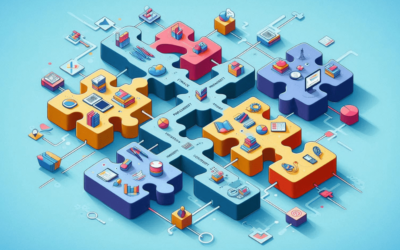Supplier onboarding is not just a procedural formality; it’s an opportunity to set the stage for a fruitful partnership. When a new supplier joins your network, a well-executed onboarding process conveys professionalism and demonstrates your commitment to a mutually beneficial relationship.
In this blog post, we’ll delve into why effective supplier onboarding is a cornerstone of supply chain success.

-
Setting the Stage for Success
Effective supplier onboarding begins with clear objectives and a structured process. This initial stage is crucial for:
- Establishing expectations and standards.
- Communicating company values and requirements.
- Setting the tone for future interactions.
By investing time in this early phase, businesses can ensure a smoother integration of suppliers into their supply chain.
Steps to Set the Stage:
-
Develop a comprehensive onboarding plan: Outline the steps, timelines, and key responsibilities for both your team and the supplier.
-
Communicate clearly: Provide all necessary documentation and information upfront.
-
Foster transparency: Be open about your expectations and the criteria for success.
-
Mitigating Risks
Effective supplier onboarding involves due diligence and risk assessment. By thoroughly vetting suppliers, you can identify potential risks early and take appropriate measures to mitigate them. This proactive approach protects your organization from unexpected disruptions.
Key Risk Mitigation Strategies:
-
Conduct thorough background checks: Review the supplier’s financial stability, compliance history, and reputation.
-
Evaluate potential risks: Identify and assess risks related to quality, delivery, and regulatory compliance.
-
Implement mitigation plans: Develop strategies to address identified risks, such as alternative suppliers or contingency plans.
-
-
Ensuring Compliance
Compliance with industry standards and regulations is paramount. An efficient onboarding process ensures that suppliers meet these requirements, reducing the likelihood of compliance-related issues down the road. It also helps in adhering to ethical and sustainability standards.
Compliance Best Practices:
-
Standardize compliance checks: Use a consistent approach to evaluate all suppliers.
-
Document compliance requirements: Clearly outline the necessary certifications, regulations, and ethical standards.
-
Regularly review and update: Ensure that compliance checks remain current with evolving standards.
-
-
Streamlining Communication
Clear communication is at the heart of successful supplier relationships. Effective onboarding sets expectations and establishes communication channels. It ensures that both parties understand roles, responsibilities, and processes, minimizing misunderstandings and disputes.
Communication Tips:
-
Establish primary contacts: Designate specific individuals responsible for communication on both sides.
-
Use collaborative tools: Implement platforms that facilitate easy information sharing and updates.
-
Regular check-ins: Schedule periodic meetings to discuss progress and address any issues.
-
-
Enhancing Efficiency
A well-structured onboarding process streamlines operations. Suppliers can integrate seamlessly into your systems, making it easier to exchange information, place orders, and manage inventory. This efficiency can result in cost savings and improved lead times.
Efficiency Enhancement Techniques:
-
Automate processes: Utilize software solutions to automate repetitive tasks and data entry.
-
Simplify documentation: Create easy-to-follow guides and templates for suppliers.
-
Optimize workflows: Continuously refine processes to eliminate bottlenecks and improve speed.
-
-
Leveraging Technology
Modern supplier onboarding often involves leveraging technology, such as Supplier Relationship Management (SRM) software. SRM tools facilitate data exchange, collaboration, and performance tracking, enhancing transparency and efficiency.
Technology Integration Steps:
-
Select the right tools: Choose SRM software that fits your needs and budget.
-
Train your team and suppliers: Ensure everyone knows how to use the technology effectively.
-
Monitor performance: Use the software to track key metrics and make data-driven decisions.
-
-
Performance Monitoring and Improvement
Effective onboarding includes mechanisms for monitoring supplier performance. By tracking key performance indicators (KPIs), you can identify areas for improvement and work collaboratively with suppliers to enhance their performance.
Performance Monitoring Tips:
-
Define clear KPIs: Determine which metrics are most important for your supply chain’s success.
-
Regular reporting: Set up a schedule for reviewing performance data with suppliers.
-
Collaborative improvement plans: Work with suppliers to address any performance issues and develop improvement strategies.
-
-
Building Trust and Loyalty
A smooth onboarding experience builds trust and fosters loyalty. Suppliers who find the onboarding process efficient and respectful are more likely to maintain long-term partnerships, benefiting both parties.
Trust-Building Strategies:
-
Consistent communication: Maintain open and honest communication throughout the relationship.
-
Provide feedback: Offer constructive feedback and recognition for good performance.
-
Show appreciation: Recognize the supplier’s efforts and contributions to your success.
-
Conclusion
Effective supplier onboarding is not merely a procedural step but a strategic imperative in the realm of supply chain management. It serves as the linchpin for fostering strong, enduring partnerships and ensuring the seamless flow of operations. From mitigating risks through thorough vetting to enhancing communication channels and leveraging technology, supplier onboarding plays a pivotal role in fortifying the foundation of a successful supply chain.
Effective supplier onboarding is not merely a procedural step but a strategic imperative in the realm of supply chain management. It serves as the linchpin for fostering strong, enduring partnerships and ensuring the seamless flow of operations. From mitigating risks through thorough vetting to enhancing communication channels and leveraging technology, supplier onboarding plays a pivotal role in fortifying the foundation of a successful supply chain.
By prioritizing a well-structured onboarding process, organizations can not only achieve compliance with industry standards but also instill trust, loyalty, and efficiency into their supplier relationships. The benefits extend beyond the immediate gains, influencing cost savings, improved lead times, and overall operational excellence.
Moreover, in the face of a dynamic and ever-evolving business landscape, effective supplier onboarding positions a supply chain for agility and adaptability. It enables organizations to navigate changes seamlessly, ensuring a continuous and reliable flow of goods and services. The commitment to continuous improvement, coupled with performance monitoring, creates a feedback loop that propels the supply chain towards excellence.
In essence, supplier onboarding is the unsung hero that transforms a mere transactional process into a strategic advantage. As businesses strive for sustainable growth, recognizing and investing in the significance of supplier onboarding is the key to building resilient, collaborative, and forward-looking supply chains.
INTERESTED TO KNOW MORE?
CLICK THE BELOW BUTTON TO SCHEDULE A DEMO WITH US!



